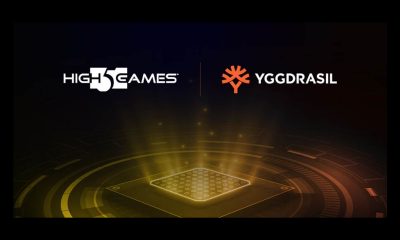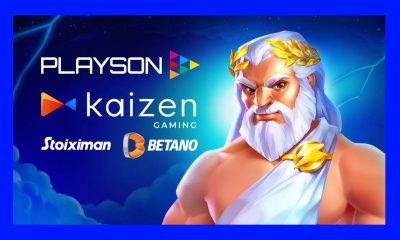Latest News
Odgers Berndtson: Annual income of esports top management can reach $170 000

 Reading Time: 4 minutes
Reading Time: 4 minutes
Headhunters are often among the first to identify trends, thereby making them the people who come to find the best managers.
Odgers Berndtson has interviewed twenty top club managers around the world – from North America to Oceania, including Western Europe, Russia and the CIS countries. The results of this study will be useful for all market participants: clubs to compare themselves with competitors, investors who want to enter the esports market, professionals who want to work in the industry, and for fans who are interested in understanding what’s behind their favorite players.
Organisational structures
During interviews with representatives of esports clubs, we have identified 2 main management models (each of them can be subdivided into 2 subcategories):
The first model is a business structure with traditional key functions inside: Sales, Operations, HR, Finance, etc., which report to the CEO. These structures follow the classic organisational model from the corporate world. 81% of the clubs we surveyed have this type of organisational structure.
The remaining 19% of clubs have only two key managers – CEO (Chief Executive Officer) and COO (Chief Operating Officer), who share areas of responsibility among themselves. The most common configuration is when one manager develops such functions as Sales, Marketing and Gaming, and the another one is responsible for the back-office (accounting, finance, etc.). In 50 % of these companies the club outsources the functions of sales and marketing, and the rest have these functions (including sales and marketing) implemented internally.
Sports management
The main resource of the esports business are players, teams, and sports results. Nowadays, clubs use 2 main models of sports management. 57% of clubs have a Sports Director / Chief Gaming Officer who is responsible for team management and sports performance. In the remaining 43%, this function is linked with one of the top managers of the club (CEO / COO). The main factor in both approaches is the CEO / COO’s personal professional gaming experience.
Compensation packages
After we have gathered and systemized all data of compensation packages in the clubs, we saw a big difference in absolute values (up to 10 times). This is due to the different living standards in the regions where esports clubs are present. To present the relevant average earnings in key positions, we removed 10% of the minimum and maximum values.
Annual income:
• CEO – from $ 70,000 to $ 170,000 gross;
• COO – from $ 50,000 to $ 160,000 $ gross;
• CCO (Sales, Partnerships, Sponsorships) / CMO (Content, Marketing, PR) – from $ 50,000 to $ 150,000 gross;
• HRD / CFO / CIO / Legal Director – from $ 40,000 to $ 120,000 gross.
Compensation packages insights
Over the past 1.5-2 years, the structure of compensation packages has changed towards a form similar to other industries – a fixed part and a bonus (the amount of which depends on the KPIs fulfillment). It is important to note that about 40% of top clubs stimulate their top team with long-term incentives (LTI).
The main KPIs for top management are operational: P&L performance, growth number of subscribers on social networks and active fans, views of matches / team content, users retention, and attraction of partners.
Most of Chief Gaming Officer and the CEO have sports results reflected in KPIs. This distinguishes esports managers from colleagues who manage clubs in traditional sports, where in most cases the entire team of top managers has an additional bonus from the team’s athletic performance.
Market trends
• An esports club is no longer just a collection of players who play for themselves or their investor. It is a full-fledged business with media and commercial parts. Esports has become a valuable part of the entertainment market;
• The staff ranges from 18 to 75 people. Only 21% of the organizations we had surveyed have more than 50 employees. Esports clubs, unlike traditional sports teams, still have compact structures;
• Esports companies are becoming increasingly mature and open toward external markets. They hire people having no professional gaming experience, invite business consultants to tackle recruitment tasks, draft strategy and move the club forward;
• Proper P&L management is a short- or mid-term task for 75% of top clubs;
• Employment’s agreements with athletes have changed:
– KPIs for sports results now included
– employment contracts became long-term;
– the club’s share has increased in the prize money from tournaments.
About the study:
Source: Latest News on European Gaming Media Network
This is a Syndicated News piece. Photo credits or photo sources can be found on the source article: Odgers Berndtson: Annual income of esports top management can reach 0 000

Latest News
NuxGame & Gamblers Connect Enter a New Partnership
Reading Time: < 1 minute
Gamblers Connect is pleased to announce a new strategic partnership with NuxGame, a premier B2B software provider specialising in API-first, modular iGaming solutions.
This collaboration is designed to significantly enhance NuxGame’s brand visibility and solidify its authority across the critical regulated and emerging markets our operator network serves. NuxGame, which has been successfully developing and expanding operator projects since 2018, offers comprehensive Turnkey Casino and Sportsbook Platforms.
The company’s technical strength is unmatched, featuring a massive aggregated content library of over 16,500 games from more than 130 studios, alongside advanced, market-specific tools like its Telegram Casino Software and specialised Sweepstakes Casino Platform.
Gamblers Connect will showcase how NuxGame’s modular, API-first architecture allows clients to quickly launch a fully branded platform, easily scale into complex verticals like crypto, and benefit from full compliance support, including their Romanian Class II B2B Licence and GLI-19 Certification.
By offering transparency around risk management and a comprehensive support system, Gamblers Connect will de-risk the initial onboarding process for operators.
This strategic alliance underscores NuxGame’s commitment to delivering technical excellence and our dedication to providing our audience with trusted, high-value industry partners.
Gjorgje Ristikj, Founder of Gamblers Connect, said: “Our partnership will leverage Gamblers Connect’s high-authority platform to connect NuxGame directly with decision-makers seeking fast, scalable, and compliant software solutions. Our cooperation will focus on delivering expert content and deep technical insights into the platform’s core advantages.”
The post NuxGame & Gamblers Connect Enter a New Partnership appeared first on European Gaming Industry News.
Latest News
Soft2Bet Nominated for Best Solutions for iGaming Industry in Romania 2025
Reading Time: 2 minutes
Soft2Bet, a leading provider of iGaming turnkey solutions, has been nominated for Best Solutions for iGaming Industry in Romania 2025 by Romania Gaming Celebration 11 – Casino Inside Gala Awards. The nomination highlights Soft2Bet’s continued investment in the country and its ability to deliver highly localised and high-performing solutions for local operators and players, powered by its proprietary gamification engine, MEGA (Motivational Engineering Gaming Application).
This nomination is the latest in a series of achievements in the Romanian market, highlighting Soft2Bet’s data-driven iGaming solutions for player retention. Previously, the company was honoured as the Best iGaming Solutions Provider in Romania at the 12th Reunion of Gambling Professionals. Furthermore, its local brand, Don.ro, secured the title of Best New Launch of 2024 at the same event, and in the process showcased how its approach to creating compelling brands specifically tailored for Romanian players is highly successful.
Don.ro has rapidly established itself as one of Romania’s most recognisable online entertainment platforms. Its success is built on a highly intuitive user experience (UX), a comprehensive range of casino and sportsbook options, and strategic, locally focused marketing campaigns. In addition, Don.ro has strengthened its brand appeal and established strong trust with Romanian players thanks to its partnership with the CFR Cluj 1907 football club, in the process contributing to local sports.
Don.ro uses Soft2Bet’s advanced MEGA technology to boost player engagement with missions, challenges and personalised rewards. This proprietary technology also ensures responsible gaming. MEGA allows operators to customise player experiences, rewards and activation triggers to fit local market needs. These features increase engagement, retention and long-term value for both casino and sports betting platforms.
Yoel Zuckerberg, Chief Product Officer at Soft2Bet, stated: “Being nominated in the Best Solutions for iGaming Industry in Romania 2025 category is a clear recognition of all the work our teams have accomplished with Don.ro and confirmation of the success in Romania. Our focus is on building locally relevant experiences, powered by MEGA and supported by strong compliance and design standards. We are proud of what we are achieving in Romania and remain committed to bringing quality iCasino engagement tactics and long-term strategies to our players.”
The post Soft2Bet Nominated for Best Solutions for iGaming Industry in Romania 2025 appeared first on European Gaming Industry News.
Latest News
HIGHLIGHT GAMES LIVE IN ROMANIA WITH FORTUNA ENTERTAINMENT GROUP
Reading Time: < 1 minute
London-based video virtuals and instant win games specialist Highlight Games Limited today announces that its flagship soccer products are now live online in Romania with the Fortuna Entertainment Group.
Highlight’s premium SOCCERBET games which feature genuine archive footage from some of the biggest leagues and teams in football are now available to Fortuna’s online customers in Romania via its Casa Pariurilor and Fortuna Romania brands. Available iterations of the product include Italian Football featuring Serie A, Spanish Football featuring LaLiga and English Football featuring English Premier League teams.
Steven Holmes, CEO, Highlight Games said: ‘I’m delighted to see our SOCCERBET portfolio go live with FEG in Romania. This launch represents another significant milestone in our expansion across regulated European markets, and we look forward to building on our partnership with Fortuna and bringing even more compelling content to its customers in the months ahead.’
Erik Klems, Group RNG Product Manager, Fortuna Entertainment Group added: ‘We are excited to introduce Highlight Games’ SOCCERBET products to our Romanian customers. The combination of authentic archive football footage and innovative gameplay brings something genuinely fresh to the market and perfectly complements our existing portfolio. At FEG, we are committed to offering players the best and most engaging experiences available, and this partnership with Highlight Games supports that mission. We anticipate a strong reaction from players and see great potential for continued collaboration.’
The post HIGHLIGHT GAMES LIVE IN ROMANIA WITH FORTUNA ENTERTAINMENT GROUP appeared first on European Gaming Industry News.
-
Latest News2 months ago
Announcement: 25th September 2025
-
Latest News3 months ago
GR8 Tech’s Bet It Drives Wraps Season 1 with Stephen Crystal—From Las Vegas Legends to Global Gaming Leadership
-
Latest News3 months ago
AI-Powered Gamification Arrives on Vegangster Platform via Smartico
-
Latest News1 month ago
JioBLAST Launches All Stars vs India powered by Campa Energy: A New Era of Creator-Driven Esports Entertainment
-
Latest News2 months ago
The Countdown is On: Less Than 3 Months to Go Until The Games of The Future 2025 Kicks Off in Abu Dhabi
-
eSports4 weeks ago
CS:GO Betting Gains Momentum in the iGaming Sector
-
Latest News3 months ago
Adidas Arena Set to Welcome the 2026 Six Invitational
-
Latest News3 months ago
LiveScore Group announces transformational partnership with X and xAI to drive the future of integrated sports media and betting















You must be logged in to post a comment Login